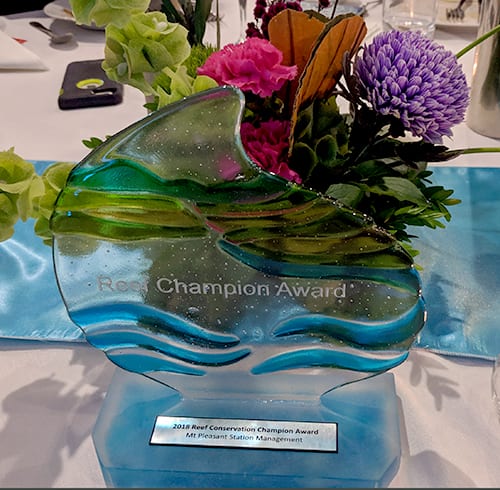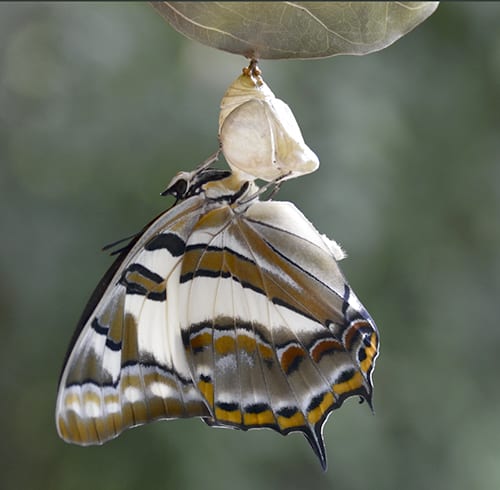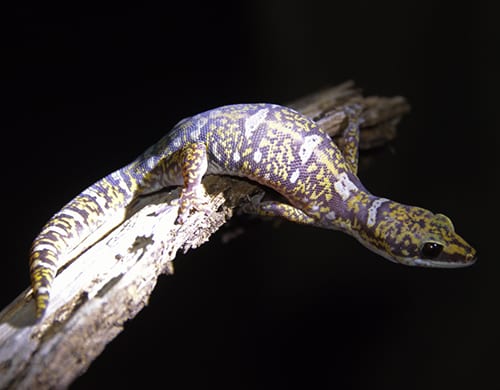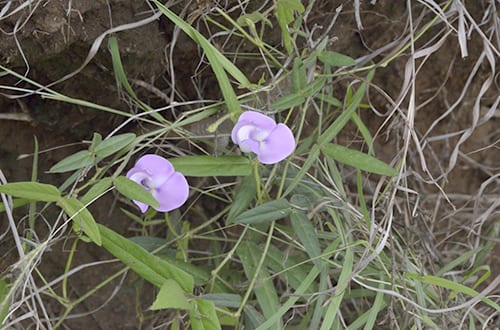Their focus is always on the landscape and biodiversity
Tailed Emperor-Polyura pyrrhus
PHOTO: Garlone Moulin
Ocellated velvet gecko Oedura monilis
PHOTO: Garlone Moulin
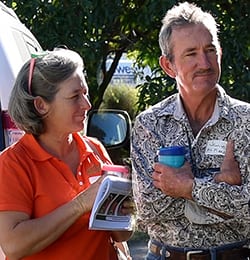
Garlone Moulin and Jamie Gordon from Mt Pleasant Station
Searching for answers, the Mt Pleasant business decision makers – Jamie Gordon, his wife Garlone Moulin, Jamie’s sister Joan and her partner Bill Jardine – attended a Grazing for Profit School that prompted them to make a strategic decision to move away from a production based business model to focus on landscape function and environmental health.
This decision has resulted in enormous economic and environmental rewards through both ecological enhancement and improved productivity. Exposure to regenerative grazing principles was a catalyst for change and led to connections with people who could provide linkages to ecological literacy, reconnection to the environment and an understanding of the complex interactions between soils, plants and animals.
The transition has been gradual and self perpetuating. The introduction of a time controlled grazing system implementing a short graze period, adequate rest, and higher density of animals has resulted in improved soil health, pasture condition and water quality. Integral to the success of the grazing system is the understanding that adjusting stocking rate to carrying capacity is crucial and forage budgeting and monitoring must be done regularly.
Landscape function analysis and Grazing BMP are used as part of a process of constant re-evaluation and modification. Animals are matched to the environment, and breeding focuses on matching traits that compliment the low input grazing system.
“We are still seeing positive changes after 15 years, including a big improvement in biodiversity,” Garlone Moulin said.
“We will continue to enjoy the rebirth of the environment. The long term results are compounding and complimenting – becoming a complex community of plants and animals.
“The sense of achievement, purpose and fulfilment we feel as a family and business is incredibly sustaining and provides ongoing motivation and emotional freedom.
“We now look at the big picture, the little niggles hold no importance. The improvement in our land condition and ultimately our bottom line means it is now looking very possible that our children can have a good quality of life on the property.
“Country needs people who understand and care for it, investing into the farm is an investment into the local community. The more generations on the farm the better” she said.
When time controlled grazing was introduced 80 per cent of the pasture was Indian Couch and ground cover levels were at best 60 per cent. Today 90+ per cent ground cover is maintained and only 45-50 per cent of pasture is indian couch.
This has allowed a reasonable level of drought tolerance where 75 per cent of normal wet season pasture can be grown in a dry year.
Business members have more time to pursue individual interests and training. The family is cataloguing the flora and fauna on the property and to date has recorded 123 different bird species.
A 1300ha nature refuge runs through the property and joins Home Haven nature reserve which abounds Mt Aberdeen National Park. The property now carries 30 per cent more cattle and conception rates of more than 80 per cent have been recorded for the past four years.
Supplements have not been fed for four years, while weaning weights have continued to increase, with weaners averaging 200kg this year. Continual monitoring of all aspects of the operation guides decision making. Profit probe, landscape function analysis and Grazing BMP are used to constantly re-evaluate and improve the business.
“We believe it is important to share knowledge and create awareness of how farmers operate,” Garlone said.
“We try to see things from both perspectives, be non-judgmental, build relationships, open lines of communication and provide an unbiased perspective of farming – without the dramatics.
“We know how important it is to have a social license to operate,” she said.
Glycine species
PHOTO: Garlone Moulin
Bumpy rocket frog – Littoria inermis
PHOTO: Garlone Moulin

